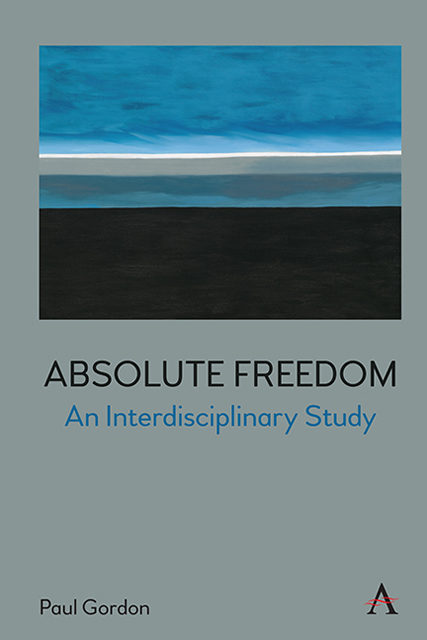Introduction: Absolute Freedom
Published online by Cambridge University Press: 10 January 2023
Summary
I began this book after years of stumbling over the fundamental question of freedom in my writing, as well as in my teaching. Although many would immediately answer this question in political terms, that context, while of obvious importance (see Chapter 6), is far from the only one and, moreover, raises more questions than it answers, for example, Is one really free in a “free society”? And while, at a more personal level, many think that freedom is merely doing whatever one likes, most would agree that being able to do so for even a limited amount of time leaves one feeling more and more un-free. And so, while such commonplace notions of freedom are relevant and, as such, will all be considered here (including the notorious “free will” debate), the fundamental question of freedom eludes those simple and questionable forms of a freedom that is, one might say, free from those more recognizable definitions.
Because this question is so large and encompasses so many topics, disciplines, and areas of research I feel justified in approaching freedom from my own particular position as a professor in the “liberal (sc. free) arts” with a degree in comparative literature, which is basically the one field within the humanities which requires that one look at issues outside of the boundaries of any particular language or discipline—it is, by most accounts, the freest of all the liberal arts programs. As the arts play a central role in comparative literature in particular, and in the liberal arts in general, Part I of this book gives particular attention to freedom as a Kantian “aesthetic idea” that informs philosophical discussions of freedom in Kant, Schelling, Nietzsche, Sartre, Camus, and Isaiah Berlin, who coined the term (but not the idea) of “positive freedom.” In Part II of this work, I take up the more practical application of this notion to what I refer to as the various “zones” of positive freedom such as academia (“academic freedom”), religion (“religious freedom”), art (“artistic freedom”), “free speech,” “friendship” (etymologically related to freedom) and, of course, “political freedom.”
- Type
- Chapter
- Information
- Absolute FreedomAn Interdisciplinary Study, pp. 1 - 8Publisher: Anthem PressPrint publication year: 2022



